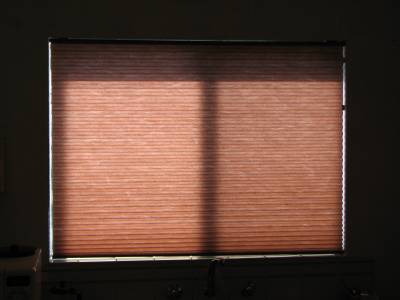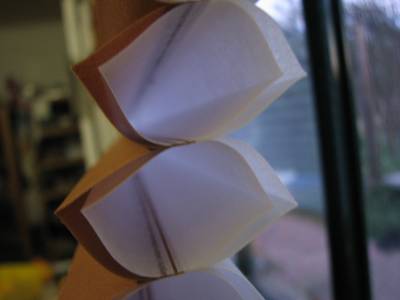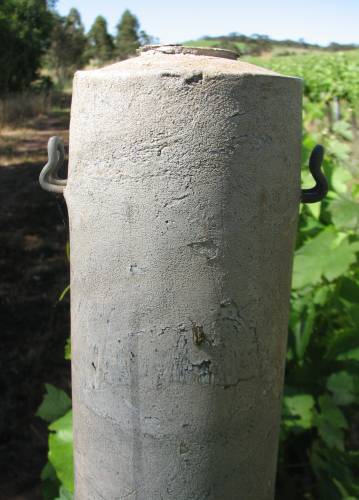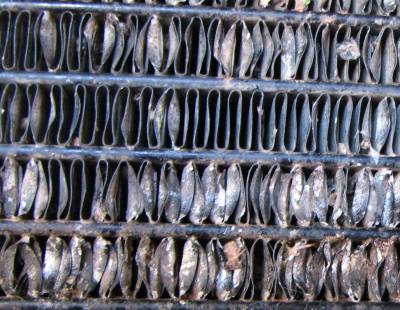|
Enviroheat heat pump water heater
I had an Enviroheat 250EH1-15 (250 litre) water heater installed on 2023/02/14. We have a six-person household. This section gives my very early impressions.Once set up (which was not easily done, see below) first indictions were that the heater was good.
Shortcomings:
- In order to make any operational adjustments, or even to view the indicator that shows how much hot water remains, or to switch on the heat booster a cover plate must be removed be taking out two screws using a screwdriver. This would have to be one of the most stupid pieces of design work I've ever seen;
- The display is almost impossible to read in sunshine (why did they use an LED rather than a liquid crystal display?
- The owner's manual that should tell one how to set up the heater to run in conjunction with solar power was incomplete, inaccurate and misleading.
Best time of day to run a heat pump water heater
The timer settings recommended by Enviroheat for a large family was to start the heating at 0600 and stopping it at 1800. The recommended temperature setting was 65° C for our six person household, 60° C for a small family.Of course our solar power supply, even in summer, is producing practically no power by 6am. I at first set the heater to start at 0730 (and off at 1730), and found that it had reheated the water after a full day's use in two hours. Even by 0730 our solar power system was running at about a quarter of its full power, so I changed the starting time to 9am.
I see no point in having the heater start well before the solar power system reaches a reasonably high output. In winter the heat pump may need to run a lot longer (because of lower ambient temperatures).
As of the time of writing I see no need to change the stop time to anything other than about 1800 as nine hours running should be plenty for all but rare situations.
The Enviroheat can also have a second heating period set. This could take advantage of low power tariffs late at night if there was insufficient heating in the day time in winter.
Update 2023/05/01
As expected the heater had to run longer in the cooler Autumn weather, so I brought forward the stating time to 0800 and made the cut-off time later.To the present I've only needed to use the booster once.
|
|
Lexar USB memory stick
I bought an 8GB Lexar memory stick in early December 2011. It worked perfectly well for a while, then worked intermitantly, then stopped working all together.I contacted Lexar, explained the problem, they asked me to return the product to the USA together with a number that they had given me, and said that they would replace the item. I sent it back in January 2012 and by mid May had received nothing from Lexar.
On 2012/05/13 I emailed Lexar. They replied that they had received my package, but that it had been ripped and did not contain the memory stick. Obviously they didn't bother contacting me at the time. They do not intend to replace the device.
|
|
This section written 2012/05/13 and 2012/05/15.
Luxaflex Duet blinds
|
On the warm, sunny morning when I took the photos, with the sun shining through the window on one of my two blinds, I could feel heat radiating from the blind on my face. I used an infra-red thermometer and found that while the temperature in the room was around 22°C, the temperature on the inside surface of the blind was much higher, up to 37°C at the warmest point.
There is a variation on the blinds that has reflecting metal foil dividers between the inner and outer layers; if your aim is to keep heat from sunlight out of a room, I would strongly advise getting this type rather than the type I have. The disadvantages with the blind with the foil dividers are that they do not pass any light and are more expensive.
This section written 2010/11/22
|
|
Davey pump
|
On the first of December 2010 I turned it on, after it had not been used since perhaps May. It didn't run; the motor had seized up. Three years was beyond the warranty of the pump, but not an acceptable life for a pump; to replace a pump every three years would be very expensive. I have a Grundfos pump in a well, where the water is at least twice as saline as in the dam, that is still running after 15 years use.
Fortunately I was able to free-up the motor by disassembling the pump, putting a spanner on the motor shaft and applying a bit of force, but how long will it be before it seizes up again, and will the next time be the last?
|
|
This section written 2010/12/02
Plastic vineyard posts
| |||||
There are several types of posts that are used in vineyards in South Australia: steel and treated pine. The pine is treated with creosote or other preservative substances, in some cases toxic heavy metals and/or arsenic, to deter termites and fungus. I have had no experience with the steel posts, but have a second vineyard patch (planted in 2001) in which I used creosote treated pine posts.
The clips used to support the foliage wires (the clips are visible on either side of the post in the photo, near the top) are still holding securely in the plastic posts while a number of clips in my creosote posts have come loose and fallen out due to cracking (along the grain). The plastic posts are showing practically no sign of deterioration. None of my posts, plastic or creosote, have broken.
|
|
This section written 2010/12/03
Dodo internet service provider
I joined Dodo in 2006 or possibly earlier; first with a dial-up service, and then with 'broad band'. All this time my subscription was automatically paid by credit card.About three days before writing this (2010/12/10) I received an SMS on my mobile phone saying that the payment had failed and asking me to ring a phone number to sort out the problem. I didn't take it very seriously thinking it might well be some sort of phishing attempt. About two days later my internet service was cut off by Dodo – note: cut off with two days warning after five years membership!
I spent about an hour trying to fix the problem via Dodo's net page (which was all I was able to reach on the Net) and by Dodo's computerised phone system (it wasn't manned until 10am), unsuccessfully and with steadily increasing frustration. Using Dodo's Net pages to do anything was not easy, for example I had to make two attempts to log on, the first would invariably fail, the second invariably succeed, and most times I changed from one page to another I had to log on again, same procedure. After 10am, when I was finally able to talk to someone, the problem was eventually sorted.
|
|
Yahoo Web Hosting
These net pages were on Yahoo's free Geocities web hosting service for several years, then I upgraded to Geocities Plus (or some other name), which allowed higher traffic, but had a US$5 per month fee. When Yahoo closed Geocities I changed to Yahoo Web Hosting.I have had good service generally with Yahoo, both Geocities and YWH, with one interesting exception. The old service used to provide a fairly reliable set of site statistics; I could (usually) see how many hits each of my pages had. With the new service I can see the total number of hits on the whole site for each of the last seven days, but not the number of hits on individual pages.
I have pointed this problem out to Yahoo several times, but with no resolution. Nothing about my pages has changed from the times of Geocities to the present, except that there are now more of them and some are probably bigger.
|
|
Much later, in 2021, I had a reason to be very dissatisfied with Yahoo Web hosting.
Telstra Elite Pre-paid Mobile Broadband
I bought a dongle for this wireless unit in early January 2011. I'm writing this in early April.When it works as it should it is good. It is faster and cheaper than my previous copper wire broadband service from Dodo.
|
|
Perhaps 85% of the time it is good.
Honda Jazz
|
We were careful when driving anywhere that locusts were present, and slowed right down (to 60 or 70 km/h) when locusts were present in anything but very small numbers. Had we been less careful our radiator might well have been ruined.
|
|
Virus protection
I have used both Vet (from CA Technologies) and Zone Alarm. While they seemed to protect my computer from intrusion I was annoyed by both when I wanted to terminate my subscription. Both automatically billed my Visa card acount for subscription renewal when I didn't want it.In the case of Vet I first wanted to upgrade from simple virus checker to virus checker and firewall. I found I could buy the firewall, but I couldn't upgrade. Finally I decided to change to Zone Alarm for both virus checking and firewall.
Then I bought a new computer that came with a virus checker, so I attempted to terminate my subscription to Zone Alarm, and found I couldn't do it. After they made an unwanted subscription renewal, I wrote to them asking for a refund; no response.
The only thing I could do to stop the automatic renewals of both, and get my money back, was to make a 'disputed charge claim' on my Visa card account.
So I purchased McAfee (2012/02/04). McAfee seemed an especially good deal because they advertised that you could install it on up to three computers and I needed a virus checker on both a desktop and a laptop. I first installed it on my desktop; no problems. It failed to install on my laptop; no reason given, just that it had failed. To add insult to injury, I was unable to delete the useless McAfee files from my computer.
McAfee having failed on my laptop, I bought Norton (2012/02/09). Norton has an unistall that works, should one need it.
|
|
In about 2020 I contracted eSet for virus protection on my Apple MacBook Air laptop. By the time of writing this comment, early 2023, I had no cause for complaint.
E book reader
In early 2011 I bought an Elonex e-book reader. It had a number of annoying faults and shortcomings, none of which were quite bad enough to justify taking it back to the retailer and asking for a refund. It could not properly display html files (especially those including tables and images) nor pdf files that included images. It was slow to boot-up, I could sometimes not get the text size that I would have liked to use, and I never did work out how its book-marks were supposed to be used. It's menu system was not easy to use either.After about four months it got itself into a loop (while attempting to boot up) that I could not break, even by pressing the reset button. (There is no removable battery). All I could do was let it go until its battery went dead.
|
|
Comments on businesses
Dick Smiths
The E book reader discussed on this page was purchased from Dick Smiths, Gawler Place, Adelaide. When it failed I took it back and they sent it off to be repaired under warrantee. They phoned me when it came back and I asked if they would post it to me as I lived 200km from Adelaide. The answer was that they could send it by courier and that would cost me $35! I inquired at the local post office and found that if they were willing to post it to me the postage would be $5. Quite unsatisfactory.|
|
Fisher and Paykel
My wife and I bought a F and P freezer at the end of June 2010. After a few days it indicated a fault and it turned out that the fault was in the automatic defrost; it was very likely that the fault was present when the freezer left the factory.The first replacement part that F and P sent was the wrong one. The repairman eventually got the correct part and fixed the freezer.
F and P did not pay the repairman the full fee; my wife and I had to pay the difference and then seek repayment from F and P. F and P did not repay us on the first request. They did not pay until I wrote a Net page complaining of the poor treatment we had had from them and pointed the Net page out to F and P.
|
|
Edwards solar water heater
I had an Edwards L305 solar water heater installed on 2012/03/06. That was the easy bit.The heater comes with 30 Renewable Energy Certificates (RECs). The plumber who installed the heater told me that I could either pass the RECs to a middle-man who would immediately give me $29 each (total $870) or I could put them into the REC Clearing House of the Office of the Renewable Energy Regulator (ORER), in which case I would get $41 each (total $1230), but I might have to wait anything up to a couple of years to get payment. I chose the latter path; it seemed an easy way of getting an extra $360 and I'd have the satisfaction of cutting out one more middle-man.
The first hurdle was ORER's system. You might think that registering some RECs should be simple, easy and quick. You'd be very wrong! If I was to go into details this section would become very long and boring; so I won't.
The next hurdle was that Edwards water heater model L305 was not registered with ORER, and while it was not registered I could not register my RECs. I phoned Edwards (08 8343 0000) about this and was told that perhaps the real model number was 4645940029? But this number meant nothing to ORER.
At the present (2012/04/09) I'm going to try again to get satisfaction from Edwards and if that fails will take the matter to the Renewable Energy Ombudsman.
|
|






